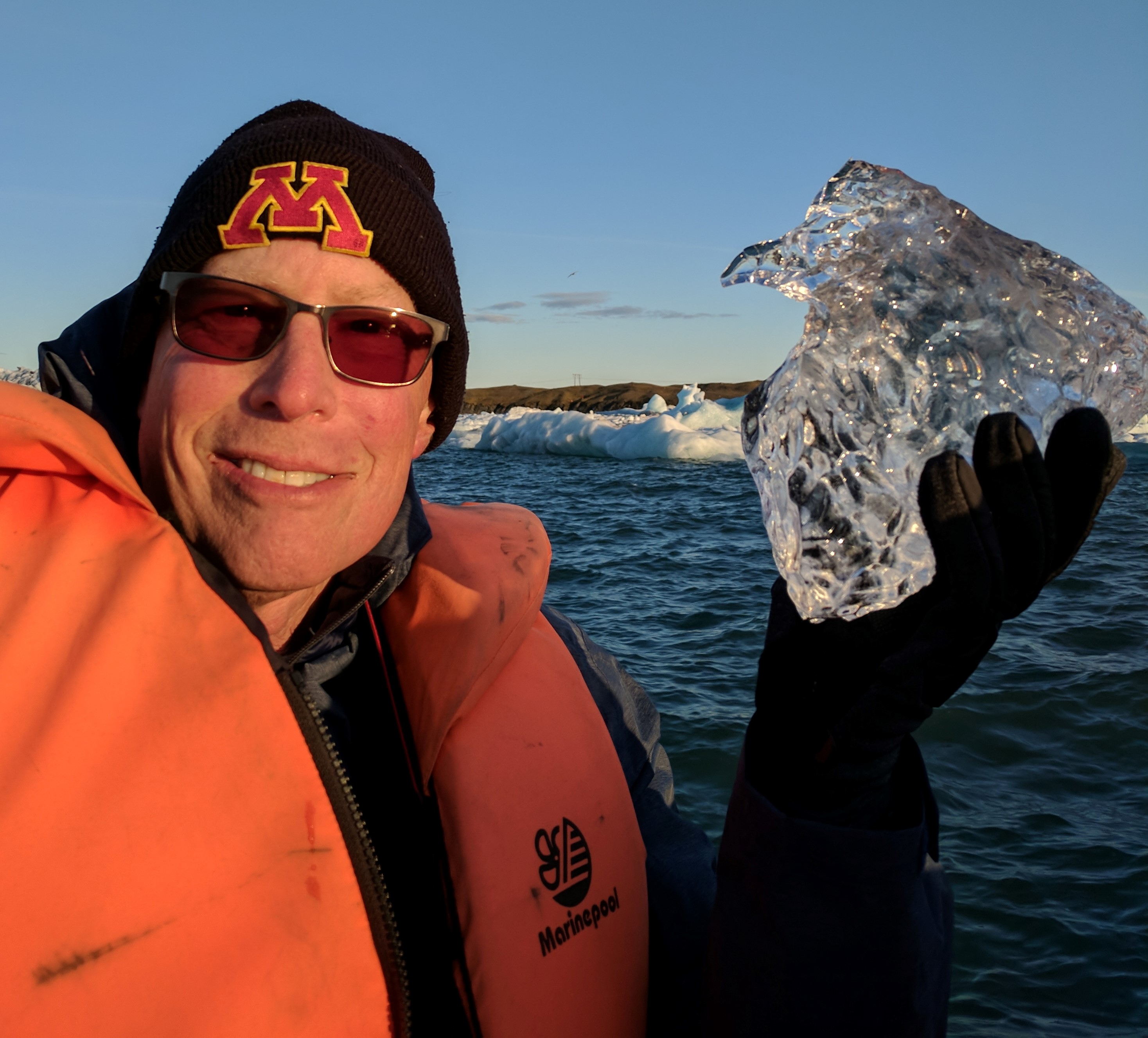
CMRR
Center for Magnetic Resonance Research, Department of Radiology
Faculty and Staff
You are here
Bruce Hammer, Ph.D.
|
|
|
My interests and career focus is hardware development and its implementation in support of biomedical applications. After obtaining my Ph.D., I worked for nine years at Intermagnetics General Corporation (acquired by Philips in 2006) as scientist developing radio frequency (RF) hardware and applications for MRI animal systems. In 1990 I joined the University of Minnesota as an Assistant Professor of Radiology to advance MRI applications. During my tenure at the U of MN I formed the Center for Interdisciplinary Applications in Magnetic Resonance (CIA-MR) that housed a 1.5 T/680mm MRI system, a 5.0 T/400mm MRI system and a 17 T/50 mm vertical bore levitation magnet. These systems were instrumental in laying the foundation for developing the concept of a hybrid MR-PET scanner, integrating a 6 MeV LINAC into a 1.5 MRI scanner and developing magnetic levitation as a ground-based research tool to simulate microgravity. The CIAMR supported MR activities for several investigators that studied 31P NMR of hemorrhagic shock, MR imaging and spectroscopy of pancreas and islet viability, bioreactor development and function and cryopreservation. On August 1, 2007, collapse of the I35W bridge in Minneapolis forced the CIAMR to cease operations because it was within 50 feet of the bridge. The lab was relocated in August 2008 to a 5,800 sq. ft facility in Minnetonka, MN, about 18 miles from campus.
Dr. Hammer’s present research focuses on the effect of gravity on metabolomic, proteomic and genomic expression of osteoblasts and the effect of gravity on induced pluripotent stem cell (iPSC) differentiation. His laboratory is comparing the outcome of ground-based magnetic levitation studies to those flown aboard the ISS in low earth orbit. One of the goals is to determine if magnetic levitation is a viable ground-based analog of microgravity. The research has implications for better understanding the mechanisms behind osteoporosis and the differentiation of pluripotent stem cells. Dr. Hammer is also pursuing the development of a miniature lyophilzer for deployment on the NASA Europa fly-by mission scheduled for a 2022 launch. This project includes evaluation of NMR spectroscopy as a tool to detect molecular markers of extant life.
Research Interests:
- NMR
- MRI
- medical electronics
- instrumentation development
- nuclear magnetic resonance imaging
- radiofrequency circuits
- magnet design
- biomedical engineering
- positron emission tomography
Selected Publications:
Hammer, B.E., Kidder, L.S., Williams, P.E., Xu, W., Magnetic Levitation of MC3T3 Osteoblast Cells as a Ground-Based Simulation of Microgravity, Microgravity Sci. Technol., 21:311.318 2009.
Harjani, R., Kim, J., Patnaik, S,, Hammer, B., Implantable CMOS Tissue Monitoring NMR Spectrometer (invited paper), IEEE Circuits and Systems for Medical Environmental Applications Workshop, Merida, Mexico, December 2009.
Kim, J., Hammer, B., Harjani, R., A Low Power CMOS Receiver for a Tissue Monitoring NMR (paper) Spectrometer IEEE VLSI Circuits Symposium, June 2010.
X. Yuanyuan, Zeng, P., Siegel, R.A., Wiedmann. T.S., Hammer, B.E., Longes, P.W.,Magnetic Deposition of Aerosols Composed of Aggregated Superparamagnetic Nanoparticles, Pharm. Res., 27(5), 855 . 865, May 2010.
Scott WE 3rd, O'Brien TD, Ferrer-Fabrega J, Avgoustiniatos ES, Weegman BP, Anazawa T, Matsumoto S, Kirchner VA, Rizzari MD, Murtaugh MP, Suszynski TM, Aasheim T, Kidder LS, Hammer BE, Stone SG, Tempelman LA, Sutherland DE, Hering BJ, Papas KK., Persufflation improves pancreas preservation when compared with the two-layer method. Transplant Proc. 42(6):2016-9, 2010.
Scott WE 3rd, Weegman BP, Ferrer-Fabrega J, Stein SA, Anazawa T, Kirchner VA, Rizzari MD, Stone J, Matsumoto S, Hammer BE, Balamurugan AN, Kidder LS, Suszynski TM, Avgoustiniatos ES, Stone SG, Tempelman LA, Sutherland DE, Hering BJ, Papas KK., Pancreas oxygen persufflation increases ATP levels as shown by nuclear magnetic resonance. Transplant Proc. 42(6):2011-5, 2010.

